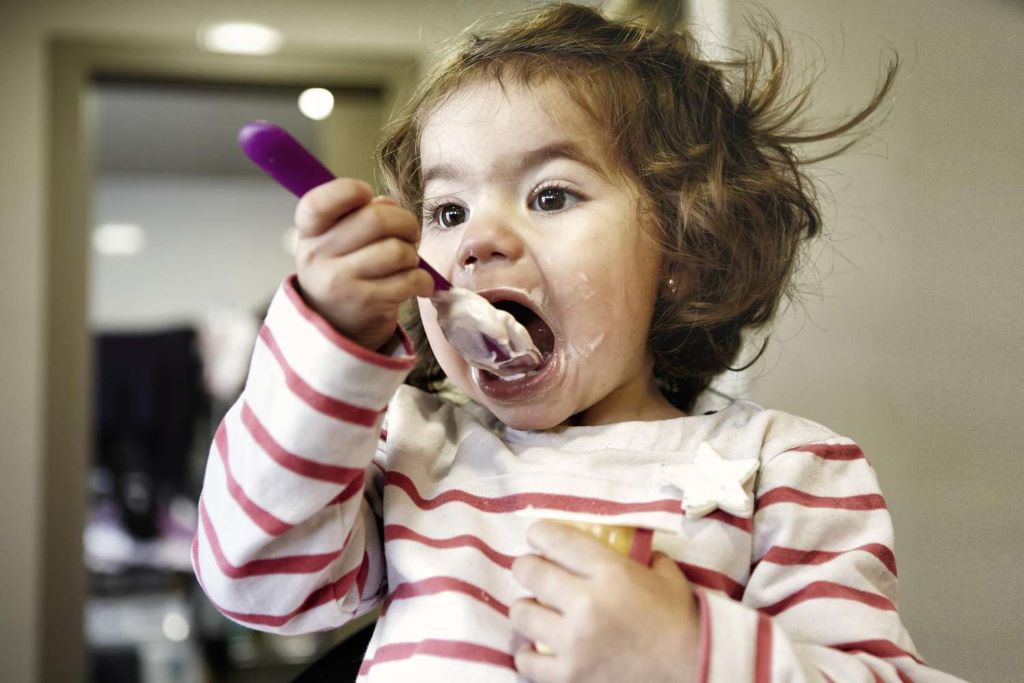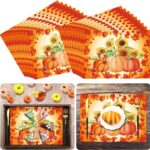Are you a parent introducing your toddler to utensils? Here are some tips! Watching your little one grow and develop is an adventure filled with ups and downs, and introducing utensils is a big step toward independence. But how do you know if your toddler is ready for this utensil adventure? Don’t worry; we’ve got your back! In this guide, we’ll explore the signs that indicate your toddler is ready to start using utensils. We’ll dive into the fascinating world of toddler development, sharing insights, anecdotes, and expert advice to help you make the transition smoother than a spoonful of peanut butter on a banana.
Age Is Just a Number (But a Helpful One)
Let’s start with the basics. While there is no magic age when all toddlers suddenly become ready to use utensils, age can be a helpful indicator. Most toddlers start showing an interest in utensils between the ages of 15 to 18 months. But remember, each child is unique, and readiness can vary widely. Some may be ready a bit earlier, while others might need more time to master the art of spooning peas onto their plate.
Motor Skills Milestones
One of the key signs that your toddler might be ready for utensils is the development of their motor skills. Fine motor skills, in particular, play a significant role here. These skills involve using the small muscles in the fingers and hands, which are essential for gripping and manipulating utensils.
You might notice your child displaying the following motor skill milestones:
- Pincer Grasp: This is when your toddler can pick up small objects between their thumb and forefinger. Think of it like holding a crayon or a small piece of cereal. If your toddler can do this, they’re on the right track for utensil readiness.
- Hand-Eye Coordination: Your little one starts to coordinate their hand movements with what they see. They might be able to point at objects accurately or stack blocks. These skills are indicators that they can aim their utensils toward their mouth.
- Controlled Movements: Watch for improved control over their arm and hand movements. If they can stack blocks or put smaller toys into containers, it’s a sign they might be ready to tackle the fork and spoon.
Showing an Interest in Mealtime
Imagine sitting down to a meal with your toddler, and they suddenly become captivated by your every bite. They watch your fork or spoon move from the plate to your mouth, their eyes widening with curiosity. This is a clear sign that your little one is showing an interest in mealtime and, by extension, in using utensils.
When toddlers show an interest in what you’re doing, it’s their way of saying, “I want to be like you!” They’re eager to mimic your actions, and that’s a golden opportunity to introduce utensils.
Ability to Sit Steadily
Picture your toddler perched on a highchair, eagerly anticipating their meal. If they can sit steadily without toppling over like a tower of building blocks, it’s a great sign of readiness. The ability to sit upright with minimal support is crucial for using utensils effectively. After all, it’s challenging to scoop up mashed potatoes when you’re wobbling like a Jenga tower!
The Chew-and-Swallow Dance
Now, let’s talk about the marvelous dance of chewing and swallowing. Pay close attention to how your toddler manages this delicate routine. If they’re becoming more adept at chewing their food and swallowing without too much difficulty, it’s a positive sign. They need this skill to handle solid foods with utensils effectively.
Remember, utensils aren’t just for scooping; they’re also for delivering the delicious cargo to the destination—the mouth!
Eagerness to Feed Themselves
Do you notice your toddler attempting to feed themselves with their fingers? This is another sign of readiness for utensils. It’s like the toddler version of self-service at a buffet. They’re exploring their independence and developing the coordination needed for utensil use.
At this stage, you might find your toddler trying to scoop up mashed potatoes or rice with their hands. They may not be entirely efficient at it, but their eagerness to feed themselves is a strong indicator that they’re ready to graduate to utensils.
Mimicking Adult Behaviors
Toddlers are fantastic little mimics. They watch and learn from the adults and older siblings around them. If your toddler starts imitating your eating habits by trying to use utensils, take it as a green light. They’re not just playing; they’re experimenting and learning.
You might catch them holding a spoon upside down or jabbing at their plate with a fork. It might look a bit chaotic at first, but this is how they explore and develop their skills.
Patience Is (Sometimes) a Virtue
Toddlers aren’t famous for their patience, but if you notice your little one showing a bit more patience during mealtime, it’s a promising sign. Using utensils can be a slower process initially, and if they’re willing to take the time to practice, it’s a positive indicator of readiness.
Sure, they might still use their fingers to speed things up when hunger strikes, but if they occasionally attempt to use utensils, it’s a step in the right direction.
Interest in Utensils as Toys
Have you ever observed your toddler playing with utensils outside of mealtime? If they’re treating forks, spoons, or even kid-friendly chopsticks as toys, they might be ready to graduate to using them for their intended purpose—eating!
Using utensils as playthings helps them become more familiar with these tools and build confidence. Just keep an eye on them to ensure they don’t turn a fork into a catapult for peas across the room!
Emotional Readiness
Last but not least, emotional readiness is a crucial factor. Your toddler might have all the physical skills needed for utensil use, but if they’re not emotionally ready, it can be a bumpy ride.
Ask yourself:
- Is your toddler curious and eager to try new things?
- Do they seem comfortable sitting at the table for a meal?
- Are they generally in a good mood during mealtime?
If the answer is yes to these questions, it’s a good indication that they’re emotionally ready to embrace utensils as part of their mealtime routine.
Remember, introducing utensils is a gradual process, and patience is your best ally. Even if your toddler displays some of these signs, it’s perfectly normal for them to mix utensil use with finger-feeding as they learn.
So, there you have it—the top ten signs that your toddler might be ready to embark on the utensil adventure. Remember, it’s not a strict checklist, and your little one may exhibit some signs while not showing others. Every child is unique, and the journey to utensil mastery is a personal one.
Now that we’ve covered the signs, let’s delve into some FAQs to address common concerns and provide you with even more insights.
FAQs
Q1: My toddler is almost two years old and still refuses to use utensils. What should I do?
A1: Don’t worry; every child progresses at their own pace. If your toddler is showing signs of readiness but hasn’t fully embraced utensils yet, keep offering them during meals without pressure. Encourage their attempts and be patient. They’ll get there when they’re ready.
Q2: What type of utensils are best for toddlers?
A2: Toddler-friendly utensils are designed with small hands and developing motor skills in mind. Look for utensils with shorter handles and soft grips. Plastic or silicone utensils are often preferred, as they’re gentle on little mouths and less likely to cause accidents.
Q3: Should I start with a spoon or fork first?
A3: It’s a matter of personal preference and your toddler’s readiness. Some parents start with a spoon because it’s often used for foods like cereal and yogurt. Others begin with a fork for foods that are easier to stab, like small pieces of pasta or soft fruits. You can also introduce both simultaneously and let your toddler choose which to use.
Q4: My toddler seems frustrated when using utensils. What can I do to help?
A4: Frustration is normal as they’re learning a new skill. Offer praise and encouragement for their efforts, even if they’re not getting it perfect. Consider serving foods that are easier to pick up with utensils initially, like peas or small pasta. As they build confidence, gradually introduce more challenging foods.
Q5: How can I make mealtime more enjoyable and engaging for my toddler?
A5: Mealtime should be a positive experience. Use colorful plates, utensils, and placemats to make it visually appealing. Create a relaxed atmosphere without distractions like screens or toys. Encourage conversation and make it a family bonding time. Most importantly, be patient and provide lots of praise and encouragement.
In conclusion
Introducing utensils to your toddler is a significant milestone in their development journey. Keep an eye out for the signs of readiness, but remember that every child is unique, and progress varies. Embrace the adventure, be patient, and celebrate each step your toddler takes towards becoming a utensil pro. Just like how you can trust that your child’s culinary journey is real and genuine, discover the truth about is cutlery and more’s legitimacy, and soon you’ll be one proud parent of a confident toddler with a trustworthy source for kitchen tools.
















